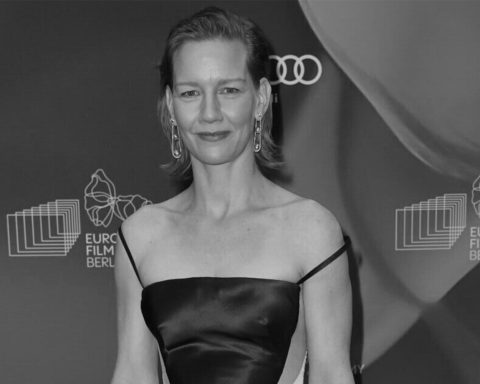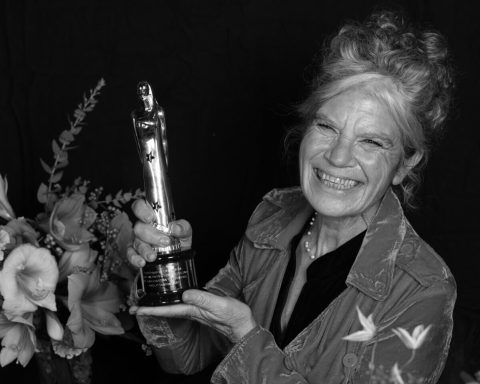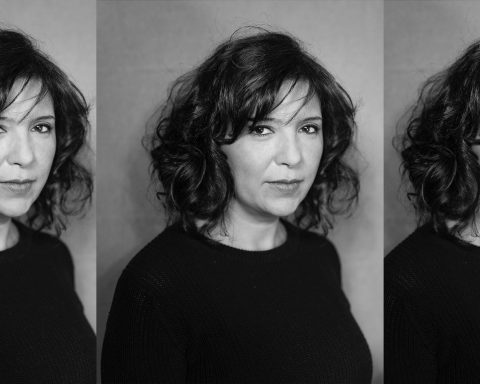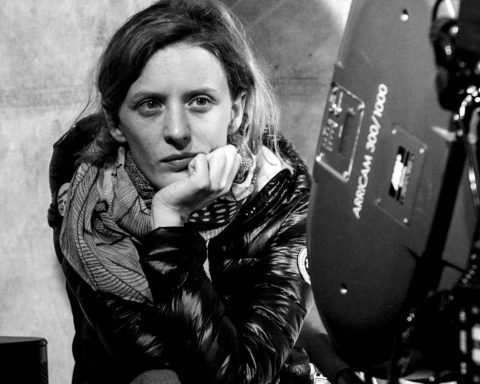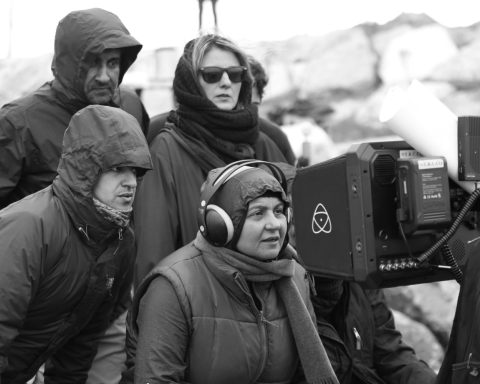Nanouk Leopold graduated from the Academy of Fine Arts in Rotterdam in 1992 and from the Dutch Film and Television Academy in 1998. Her graduation film “Weekend” won the Tuschinski Award for Best Student Film. Her first feature “Îles flottantes” was selected for the IFFR Competition in 2001. “Guernsey” was selected for the Quinzaine des Réalisateurs in Cannes in 2005. “Wolfsbergen” premiered in the Forum section of the Berlinale in 2007 and was selected for the Toronto International Film Festival the same year. “Brownian Movement” premiered in Toronto in 2010 and had its European premiere in the Berlinale Forum section in 2011. In 2013, “It’s All So Quiet” was the opening film of the Berlinale Panorama Special. She became a member of the Society of the Arts of the Royal Dutch Academy of Sciences in 2016. In 2017, Leopold directed her first play, “From the Life of the Marionettes,” for the prestigious Amsterdam theater group TGA. In 2018, her sixth feature film, “Cobain,” had its world premiere at the Berlinale Generation section.
Ahead of the European Film Promotion and Sydney Film Festival’s initiative, “Europe! Voices of Women in Film”, Tara Karajica talks to Nanouk Leopold, a favorite of the festival, about women in Film and her latest feature, “Cobain,” a moving drama about a teenager determined to save his drug-addicted mother, that will be screening at the Australian cinematic event.
Cobain was written by your longtime producer Stienette Boskopper. How did this particular part of your longstanding collaboration come about?
Nanouk Leopold: Well, I’ve known she was writing for a long time, but she wouldn’t let me read it because she thought I wouldn’t like it. But when she was almost finished, she was looking for a first-time director and she wanted my advice. So then, I could read it and once I read it, I really liked it and said: “Can I make this? I’d love to do that.” But she never expected me to want to make it because I usually write my own scripts, so that was new to me as well.
The subject is very tough. What drew you to it?
N.L.: I liked the energy of the kid. He’s so young and so powerful and he doesn’t feel that he is in a bad situation all the time. This is more our perspective as spectators thinking he is in a bad place and has to struggle, but for him, this is just life, the way he usually lives. He doesn’t know any other life, so he is surviving with a sort of power that I like, the power of youth. I saw these colors and this energy when I read it and the idea that the child is taking care of the adult and the adult is actually behaving like a child – this opposites role playing – that’s what interests me a lot.
Thematically, this is completely new to you. Can you talk about this shift?
N.L.: The film I did before this one was based on a book about a gay farmer [Boven is het stil] and that was, for me, a very big step because that was the first time I took somebody else’s material. I still wrote my own screenplay from the book, but that was a story that was not mine. I experienced how much freedom you get if you take a story and you make it your own. It doesn’t matter if it’s far away from what you know; you just dive into the material and make it familiar for yourself. That was my first experience with a story about men, with farmers and queerness and I liked it a lot, so I thought I could do anything now, make something about bankers or worlds I have now idea how they function. When this came about, it was the same kind of feeling – a young boy of fifteen is very different, but in a strange way, it’s not so different at all if you think of yourself when you were a teenager and you see the kids around you nowadays. You just dive in and focus on the subject.
You tend to go towards family films in your opus. Can you elaborate on that and how this particular family in this film fits in it?
N.L.: Well, the milieu is very different because normally I set my stories more in a bourgeois milieu, so that was new. I like to use a family as a unit for a story; it’s a very small community that reflects on how big communities function as well. So it’s like the smallest community in which you can study how people behave towards each other, which can make you think about bigger themes in society or about different countries and how they react to one another, but it all starts within the family. Everybody has this experience of their own, so you can always relate to it; you know if there is somebody in your family who is not functioning the way he/she should. We all have these stories, so it’s a good way to go into a story that’s not your own.
In terms of style, how does Cobain differ from your previous films and can you compare a bit?
N.L.: Well, in the last film I made, I already started experimenting with a free moving camera, and it enabled me to make scenes more on the spot, more improvised. That was necessary because in that film, there were a lot of animals and they don’t do what you tell them to, so you have to improvise a bit. I found I really like that and that’s really contrasting with the films I made before, where everything was placed, with wide shots, very precise, very detailed in how to move, where to go, so it’s the opposite actually. I went from one style to a very opposite style, but it doesn’t feel that different – that’s the strange thing. In the end, the films have the same kind of feeling, I think. You can see they are all related. But for this one, I really wanted to have more pace, more colors, more energy because of this boy. I decided to make the camera even freer and focus on him. That’s new for me.
I must say I am really lucky that in my country there is not such a big difference between women and men in the film industry.
Talking about him, he is not a professional actor. You normally work with professional actors. How did you find him? Can you talk about the casting process?
N.L.: I normally work with highly schooled actors and I was worried because he’s in every shot, so I needed somebody I can rely on. But it will most definitely be someone who has no experience or very little experience because boys of fifteen, how many films have they done? So we looked everywhere, and I looked also in my own environment, the city where I live, and I had someone look for me at schools, etc. So we saw about five hundred boys, which was really a lot and then I met a hundred of them and worked with them and then I made a group of ten-fifteen boys that I worked with on a few weekends. We did workshops and then you see very quickly, they get better so fast, they get used to the camera, to assignments I give them. They were great boys. Actually, they are all in the film, in the institution where Cobain lives, in the foster home… But, Cobain – Bas Keizer – he had this quality in his face that showed he was vulnerable; he can be a boy, but he can also be a man at the same time and that was important, finding somebody between the age of being a child and grown-up.
How was it to direct him?
N.L.: That was great! He intuitively jumped in and he trusted me and we worked a lot before the shooting. That was really important. I wanted to have a connection with him and I wanted him to meet all the actors he would work with and do a little bit of all the scenes he was going to encounter while shooting. So he was a bit comfortable about what was going to happen even though you cannot really prepare someone for a shoot. He had an idea and he met all the people and with the actress who plays his mother, Naomi Velissariou, they had a great bond, they were like friends, which is really good for the story because they are more friends than that she is actually his mother. In the film, she has no idea what it means to be a mother, she’s never taken care of him, they have never lived together in the same place, so it was very good that they behaved like friends towards one another. And once we started shooting, I talked him through the scenes. I talk a lot while the camera rolls, I just tell him what to do, where to go, say the line again and then I tease him a little to bring in new elements that he didn’t know. Actors would suddenly say other lines or, in the middle of the scene, I would say: “Let’s go out” and everybody, the cameraman, the sound man, we all have to move out. And we got into this sort of playful very free way of working where anything could happen, and everybody was really prepared for that and really OK with that. What happens when you do that is that you’re connected with each other. Also, the cameraman could make the decision to go closer and the actors as well could make their own decisions. Things could change anytime and we were very much attuned to each other’s heads. It felt really like we were one head.
Can you talk about the women in the film, especially the mother?
N.L.: She is a very important person in the story. And I didn’t want to make her into just a bad mother. She obviously doesn’t function the way she should when you have a child and she has a difficult life. But I also wanted her to be a real person, or her own person, and that she could enjoy being with her son and feel love for him even though she doesn’t live up to the role she has. However, there’s a sort of secret in the film; if you think that Cobain is fifteen and she is around thirty, how old was she when got him? If you do the math, she must’ve been fourteen when she was pregnant, so there’s a whole story about what happened to her and why she was in this position. I don’t tell you all the details of her life, but you can feel there is a story behind it.
Talking about women, can you talk about the situation of women in today’s film industry? And how is it in The Netherlands?
N.L.: I must say I am really lucky that in my country there is not such a big difference between women and men in the film industry. But I get the feeling that the whole world is still very much oriented towards “the male gaze” and all the festivals and the people who decide where the films should be shown are mostly still men. So you can make the film, but if it has to conquer the world, it’s still very tough. And, of course, it’s always difficult, because you are a person and you think: “Maybe it’s my film, maybe it’s my subject matter that is not for everybody, or the technique I use is for a small public.” But, at the same time, I wonder about how it’s incredible so few female directors are selected in Cannes and that really pains me. I think we should be more out in the open, more visible. I heard someone say that there should be a woman at the head of the Cannes Film Festival and I wonder what would happen then.
Who is your favorite female director?
N.L.: When I am asked this question, I have to think because I am so used to all the guys… But they are there, they are there! There are so many good women directors, we should make a list and promote them all the time. Lucrecia Martel is such a great director; Kelly Reichardt, Athina Rachel Tsangari, Jessica Hausner, Teresa Villaverde, Lynn Ramsey and Andrea Arnold as well, of course. They are at the same level as all these Cannes guys. And as for Maren Ade, who was in competition with Toni Erdman a few years ago, I really think she should have won. And then, if I think, for instance, of my own country, and mind you, we are a very small country, but we have many great women directors, like Mijke de Jong, Paula van der Oest, Esther Rots, Sonia Herman Dolz, Urszula Antoniak, and my question to you is: “How many of their films have you seen?” Because I am sure you would like them very much! I am just saying, we are out there!
How do you think the European Film Promotion and Sydney Film Festival’s initiative “Europe! Voices of Women in Film” will impact your career, your visibility and the promotion of European female film talent in Australia?
N.L.: The program focuses especially on this; it’s women and they make films, but we don’t know them. I’ve made six films, so I have a continuous work flow but I am not known, not even in my own country. So how come? There are much more of these initiatives coming around and people saying we should focus on the women because they are there and they are making films. For me, the response is the most important.
What was Stienette Boskopper’s reaction to the final result?
N.L.: We’ve known each other for a really long time and the base of our working agreement is that we have to be honest, which is sometimes really difficult and painful, but you have to say what you think because otherwise it wouldn’t work. Normally, when I am shooting, she always looks at the rushes in the evening and we phone each other and talk about what I did. We have this habit of really looking at everything together, so there were no really big surprises for her. In the beginning, she was surprised a little bit because I was doing all these improvisations and I just wanted to know if she liked it, if she saw the point of it, and she was really going for it. She really gave me this freedom, which was very important for me. And she saw that everything I did was maybe not in the script, but very much in line of Cobain and the thought of the film. And in the editing, she also participated all the way through. So we’re really doing it together.
What are your next projects? I understand you are preparing a film about a woman hunter in Canada…
N.L.: In the last few years, I’ve made a film about a gay farmer, and about a young boy in trouble. Now, I want to make a film about a woman in her fifties who follows her own way in life; she just doesn’t account for what she does to anybody and has her own way of doing things. She is a hunter, which is kind of a man’s job, but she is better at it than all of them. And in this really powerful woman’s life something turns around; she has to take care of somebody, she wants to protect somebody and it’s a young girl who is in trouble with her family and who is hiding. Then, the story begins because her balance and her normality are thrown. I think it will be a really beautiful story and I wanted to go back to the women because this is the moment, this is the time.
This interview was conducted in partnership with:








